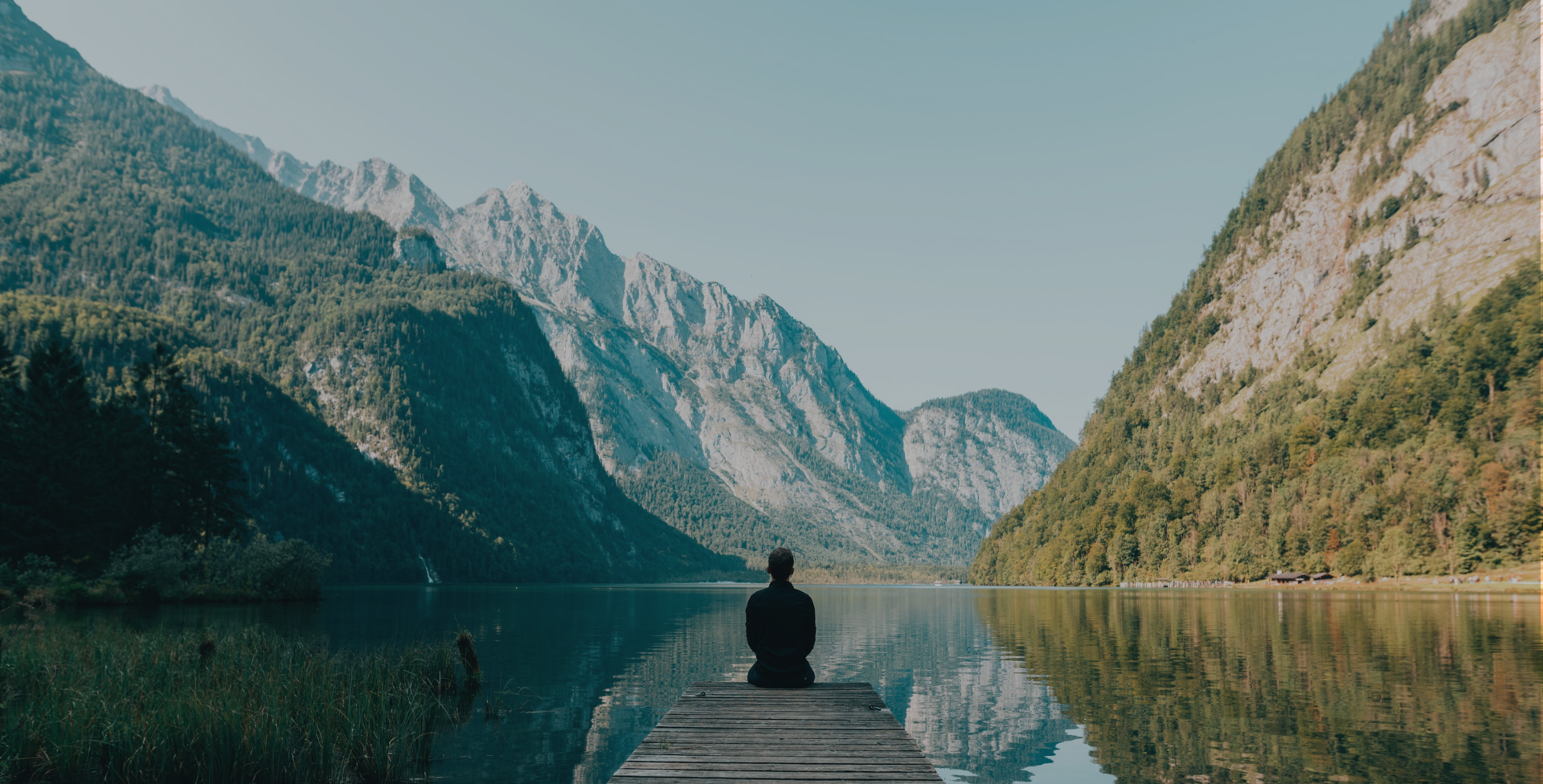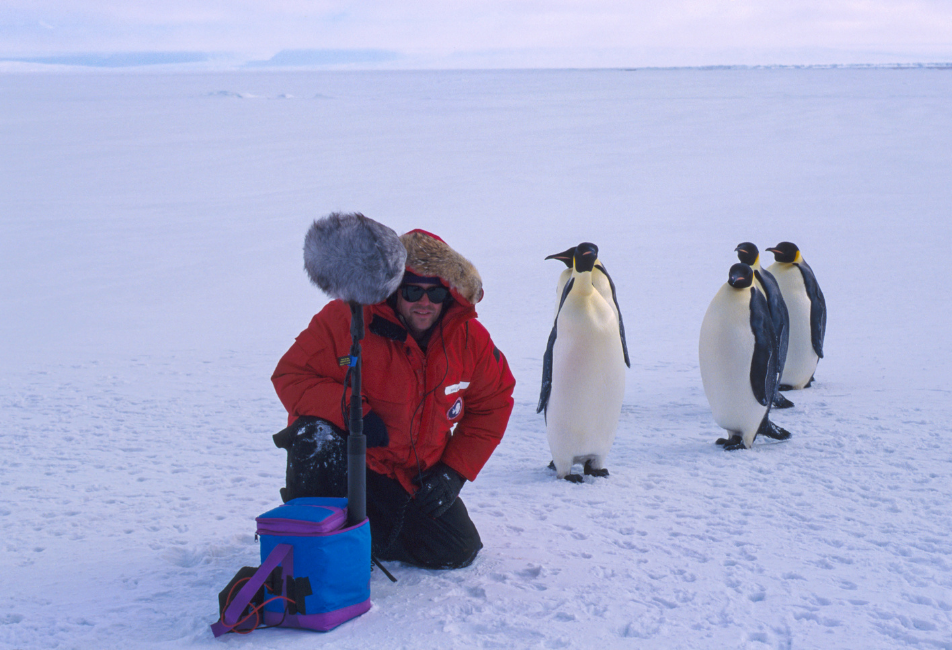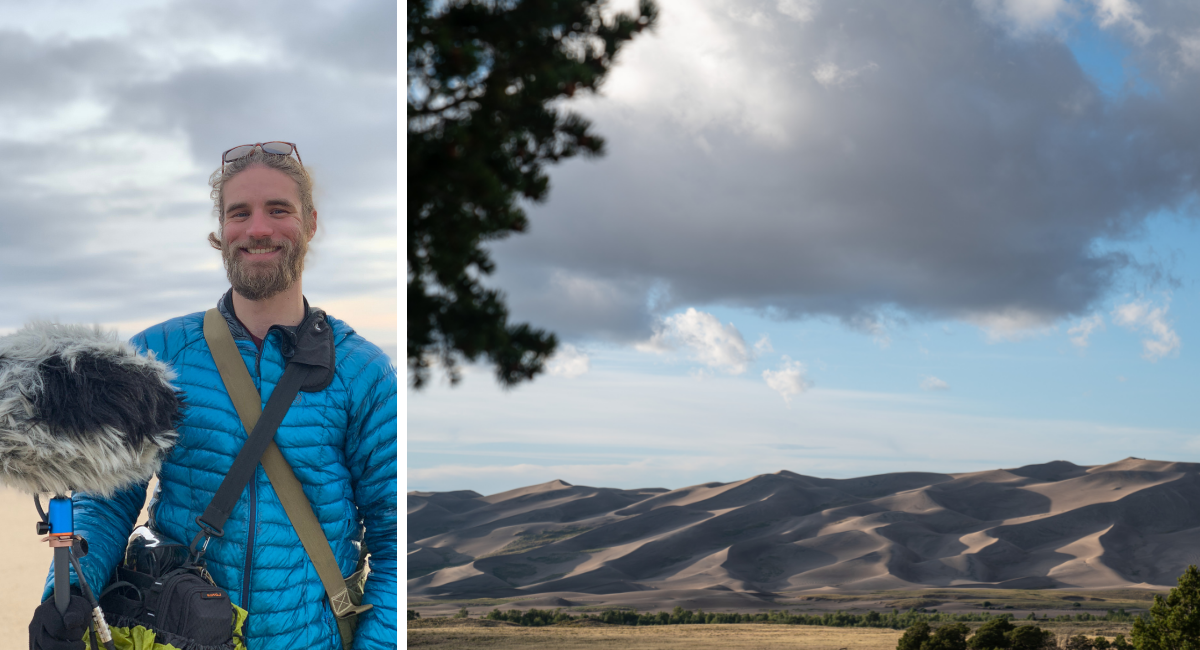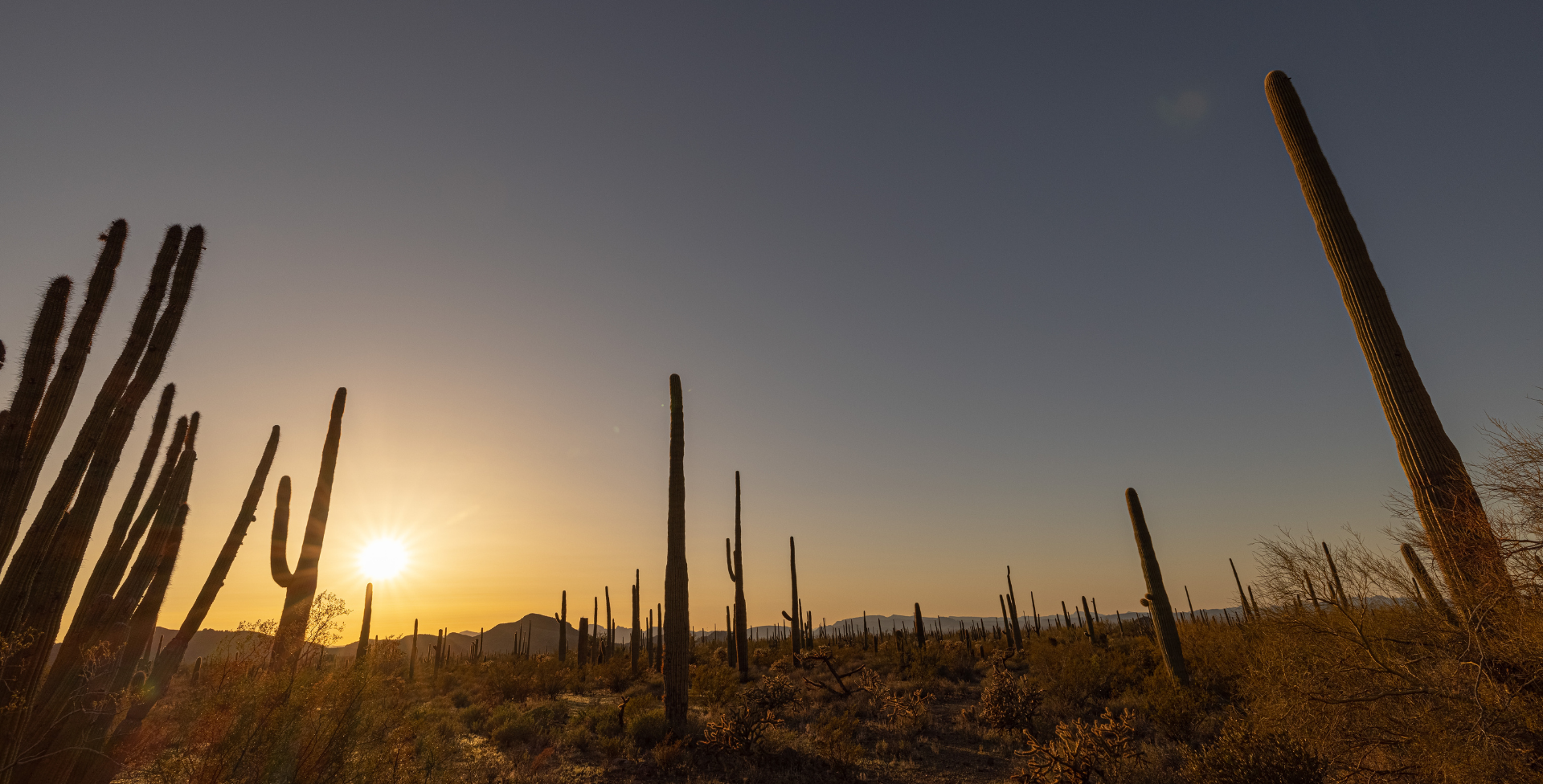

As he sat on a slope in Taylor Valley, Antarctica, Douglas Quin could hear himself as a sort of engine — breath whirring, blood pumping, heart beating. Most days the icy continent’s 200 mph gusts roared in his ears. But at that moment — on that day — an unusual silence enveloped Quin. All sound dissipated in the arid landscape, which appeared featureless apart from the glassy surface of Lake Hoare and boulders that resembled contemporary sculptures, shaped and eroded by the wind.
For 30 years, Quin, a sound designer, naturalist, music composer, and professor in the television, radio, and film department at Syracuse University, has traveled the world, documenting the natural sounds of Antarctic ice, the deserts of South Australia, the Arctic tundra, African savannah, and Amazon rainforest. He possesses an extensive collection of endangered and disappearing habitats. As a kid, animals fascinated him, and he enjoyed playing in the forest alone. He attended high school in Scotland, where his biology teacher would take him and his classmates birdwatching and on natural history walks in the Scottish Highlands. This innate curiosity for wildlife, combined with his interest in music, remained a theme throughout his life, informing his career as a sound artist. He has worked on numerous projects as a sound designer, including Jurassic Park III and Werner Herzog’s Academy Award-nominated film Encounters at the End of the World.

Douglas Quin records emperor penguins in Antarctica. Photo by Dale Stokes.
Quin admits he draws energy from moments of quiet solitude. But quiet is dwindling and may be as endangered as his collection of disappearing habitats. With 97% of the U.S. population exposed to noise from aviation and traffic, silence exists as a rare commodity, its health benefits a mystery to many. A recent study affirmed that natural soundscapes bolster human health and wellbeing. Environments with natural acoustics such as water sounds and birdsong, indicate safety to humans, which leads to stress reduction and an internal sense of calm, the same study claimed.
On the other hand, noise contributes to health problems, including hearing loss and cardiovascular disease. “Noise stimulates the nervous system, even during sleep, raising our stress hormone levels,” says Joanna Nylund, author of Silence: Harnessing the Restorative Power of Silence in a Noisy World. Living in a consistently noisy environment, therefore, makes us more likely to experience chronically elevated levels of stress, leading to hypertension.
The loudest sounds — highways, airports, and trains — typically are located in low-income neighborhoods predominantly of people of color. These neighborhoods also tend to lack access to parks and green spaces, which further limits their ability to attain the health benefits of natural quiet. Michelle Kondo, a research social scientist with the USDA-Forest Service at the Philadelphia Field Station, has seen firsthand how green spaces can transform a noisy neighborhood. In her research, she discovered that cleaning and greening vacant lots in low-resource communities in Philadelphia led to a decrease in symptoms of depression and feelings of worthlessness among residents. She also found significant declines in gun violence.
Kondo works with pediatricians in Philadelphia and across the country to kickstart Nature Rx programs that promote the use of outdoor activity to combat illnesses, typically among residents of inner-city, poorer neighborhoods. When she tells patients battling anxiety, for example, that they need more outdoor time, “the common patient reaction is, ‘Well, I don’t have any safe green spaces near my house that I can go to. I don’t have a car,’” Kondo says. She says that vacant lot remediation addresses these problems by improving access to green spaces in urban areas.
Other organizations seek to help with the issue of urban noise. Quiet Parks International, a non-profit dedicated to preserving natural quiet for health and wellbeing internationally, is working on its Urban Quiet Parks program around the world. They awarded Yangmingshan National Park in Taiwan as the honor of the world’s first Urban Quiet Park in June 2020, an honor recognized by the Taiwanese government. “Cities around the world should identify, protect, and make accessible places in nature that are dedicated to silence in the outer sense and stillness in the inner sense,” says Ulf Bohman, executive director of the Urban Quiet Parks program at Quiet Parks International, in a statement on their website.
Emily Hesler, a sound recordist for Quiet Parks International and recent graduate of the Berklee School of Music, is helping the organization establish an Urban Quiet Park in New York City. In March, she visited areas in Central Park and Prospect Park in Brooklyn to not only assess the levels of quiet but also evaluate accessibility for city residents. “It’s pretty relative what quiet is,” she says. “You're not going to find an area that's as quiet as something in the wilderness, but there's a couple areas that are promising.”
Cities around the world should identify, protect, and make accessible places in nature that are dedicated to silence.
Walking through Central Park, Hesler says she almost forgot she was in the middle of the city. She felt relaxed and at ease. Considering her distaste for cities, she describes the experience as surreal. After surveying the potential quiet parks, Hesler says the next step is to conduct tests and record sounds in the urban green spaces. Based on that, they can hopefully establish one, two, or even three quiet parks in the city.
“The most important thing for me is that people can have the same experiences that I've had with nature and with quiet,” Hesler says. “It's honestly changed my life, and right now I think the only issue is that it's not nearly as well known as it should be.”
Hestler works with Matt Mikkelsen, executive director of the Wilderness Quiet Parks program at Quiet Parks International, which designates outdoor spaces that experience several hours of quiet at a time. The Zabalo River in Ecuador became the world’s first Wilderness Quiet Park in April 2019. Mikkelsen travels to potential quiet parks around the world, and he plans to visit a few this year to collect data. One of them is Haleakalā State Park in Makawao, Hawaii, which Mikkelsen considers one of the quietest places in the whole world. “At the base of the crater at Haleakalā, it's so quiet that your ears can't actually process how quiet it is,” he says. “You just hear ringing.”

Matt Mikkelsen says that if you’re not a morning person, quiet is hard to come by. Waking up at sunrise and listening to the birds wake up is a “meaningful experience,” he says. Photo courtesy of Matt Mikkelsen.
A recent Quiet Parks International trip took Mikkelsen to southern Arizona and right along the U.S.-Mexico border in Organ Pipe Cactus National Monument. The climate was arid, and different types of cacti filled the landscape. Migratory birds making a pit stop in Southern Arizona and Texas as they traveled from South and Central America to New York and Minnesota filled the sky. “I was there trying to say hello to the birds as they were coming north, and it was a really magical experience,” Mikkelsen says, “and at times one of the quietest places, in terms of noise pollution, I've been to.”
Organ Pipe’s designation as a military training zone makes it unique among quiet spaces — no commercial or private jet traffic is allowed in the air space above the area. Military training exercises occur Monday through Friday, but on weekday evenings and Saturdays and Sundays, no planes fly at all. Mikkelsen says he experienced hours at a time of no noise pollution. He says quiet grounds him in his world, in his place, and in his being. “Even when I'm standing in the middle of the desert at three in the morning, it makes me feel closer to people and closer to humanity, and my family and friends,” he says. “There's not really a way that I can think of that quiet doesn't make me a better person.”

Organ Pipe Cactus National Monument is located on the U.S.-Mexico border. Matt Mikkelsen says he witnessed people crossing the border and traveling for days on foot. Photo courtesy of Matt Mikkelsen.
Before he began working with Gordon Hempton, the co-founder of Quiet Parks International, Mikkelsen thought he had experienced true natural quiet. It wasn’t until he arrived at his first quiet place that he realized what he had been missing for 18 years of his life. “It slapped me in the face,” Mikkelsen says. “I was like, ‘Oh my God, how have I gone this long without actually being in a quiet place.’”
And that experience informs the work he does and his desire to increase access to these spaces for others. “Once you experience quiet and what quiet can do for you, it becomes really self evident why we need to work to protect it,” he says. “And why we all need to have access to quiet places.”

Our pursuit of outdoor joy is remiss without the acknowledgement of the occupation of unceded Indigenous land. We are students and journalists working, writing, and living on the land of the Haudenosaunee Confederacy, comprising the Six Nations made up of the Mohawk, Onondaga, Oneida, Cayuga, Seneca, and Tuscarora nations. However, acknowledgement is not enough. Read More.